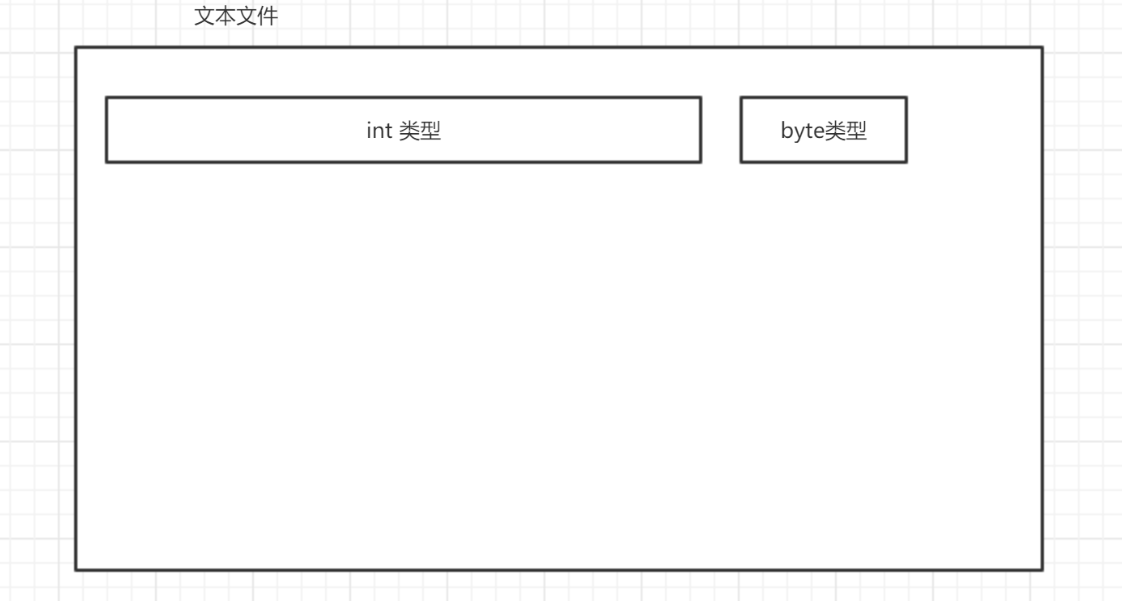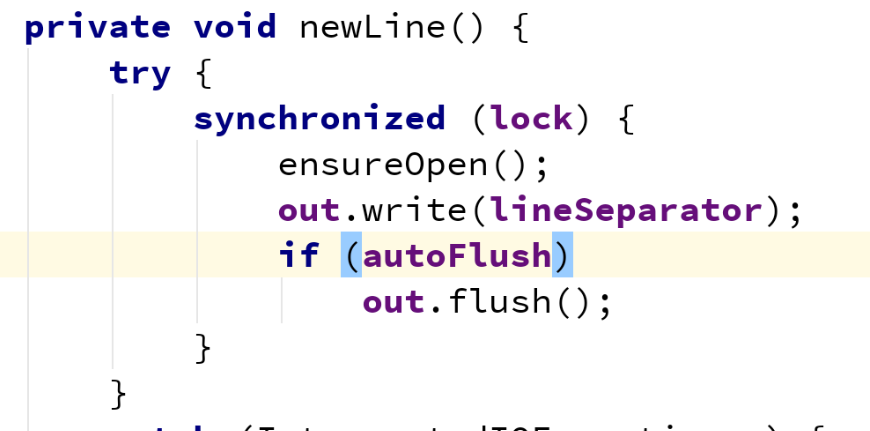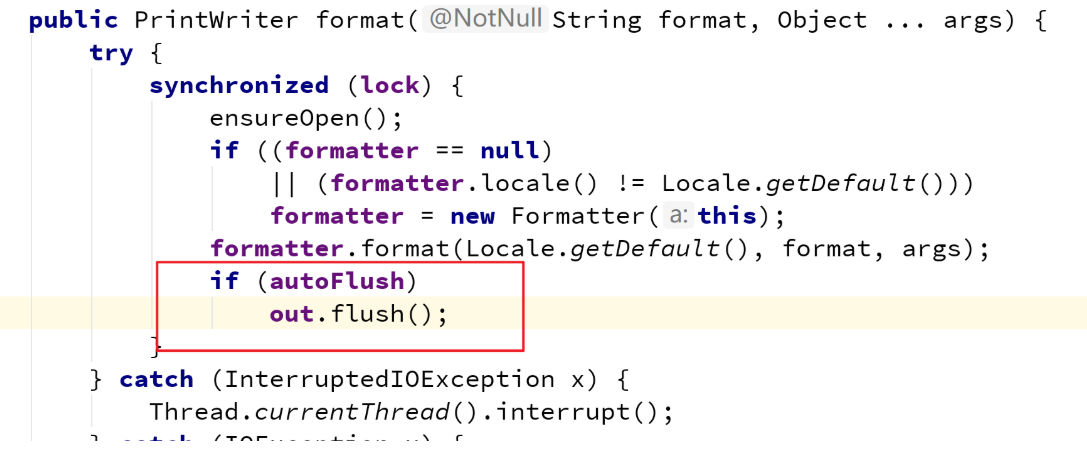1. Character stream
Causes of character stream
- Read English characters and numbers with byte stream
- No problem can be displayed normally
- Read Chinese characters with byte stream
- There may be a problem
Codec
- How is a character stored in a computer?
- Based on a coding table, the corresponding integer value (coding value) is stored in the computer
- code
- The process of converting character data into coded values based on a coding table (converting what people understand into what computers understand)
- decode
- The process of converting coded values into character data based on a coding table (converting what computers understand into what adults understand)
Causes of garbled code
Inconsistent encoding and decoding
Chinese coding table: 'you' 123
Japanese coding table: 'の' 123
Coding table
ASCII: American standard information interchange code.
It can be represented by 7 bits of a byte. one hundred and twenty-eight
ISO8859-1: Latin code table. European code table
Represented by 8 bits of a byte. 0000 0000 - 1111 1111
GB2312: Chinese coding table of China.
GBK: China's Chinese coding table has been upgraded to integrate more Chinese characters and symbols.
GB18030: alternative version of GBK
BIG-5 Code: a traditional Chinese character coding scheme commonly used in Taiwan and Hong Kong, commonly known as "big five code".
Unicode: international standard code, which integrates a variety of characters.
UTF-8: variable length to represent a character.
Different from UTF-8, it defines an "interval rule", which can be compatible with ASCII coding to the greatest extent:
It encodes Unicode as 00000000-0000007F characters, representing 0111 1111 = 7F in a single byte
It encodes Unicode characters as 00000080-000007FF and represents them in two bytes
It encodes Unicode as 00000 800-0000ffff characters, represented by 3 bytes
1 byte 0xxxxxxx
2 bytes 110xxxxx 10xxxxxx
3 bytes 1110xxxx 10xxxxxx 10xxxxxx
utf-16:
The encoding table used by the jvm uses 2 bytes to encode and decode
Char: 2 bytes
Coding table commonly used in development
utf-8 GBK ISO8859-1 ASCII
Default coding table
- Default utf-8 in idea
- Operating system Win GBK
The essence of character stream
The essence of character stream: byte stream + encoding table
1.1 character output stream
1.1.1 abstract base class Writer


1.1.2 specific subclasses
1.1.2.1 OutputStreamWriter conversion stream
OutputStreamWriter is a bridge between character flow and byte flow: the specified charset Encode the characters to be written to the stream into bytes. The character set it uses can be specified by name or explicitly given, otherwise the platform's default character set will be accepted.
Construction method
OutputStreamWriter(OutputStream out) creates an OutputStreamWriter that uses the default character encoding.
OutputStreamWriter(OutputStream out, String charsetName) creates an OutputStreamWriter that uses the specified character set.
Example:``
package com.cskaoyan.charstream;
import java.io.FileOutputStream;
import java.io.IOException;
import java.io.OutputStreamWriter;
/**
* @description:
* @author: songtao@cskaoyan.onaliyun.com
**/
public class Demo {
public static void main(String[] args) throws IOException {
// The first construction method
FileOutputStream fileOutputStream = new FileOutputStream("a.txt");
// Use default character set utf-8
OutputStreamWriter out = new OutputStreamWriter(fileOutputStream);
// Second
OutputStreamWriter outputStreamWriter =
new OutputStreamWriter(new FileOutputStream("a.txt"), "GBk");
}
}
Member method
5 write methods
package com.cskaoyan.charstream;
import java.io.FileOutputStream;
import java.io.IOException;
import java.io.OutputStreamWriter;
/**
* @description: write method
* @author: songtao@cskaoyan.onaliyun.com
**/
public class Demo2 {
public static void main(String[] args) throws IOException {
// Define string
String s = "I'll write 65 pages for you ppt";
// Create transform output stream object
OutputStreamWriter out =
new OutputStreamWriter(new FileOutputStream("a.txt"));
// Write data
// Write a single character
//writeSingle(s, out);
// Write character array
//writeMuti(s, out);
out.write(s);
out.flush();
out.close();
}
private static void writeMuti(String s, OutputStreamWriter out) throws IOException {
char[] chars = s.toCharArray();
out.write(chars);
}
private static void writeSingle(String s, OutputStreamWriter out) throws IOException {
char[] chars = s.toCharArray();
for (int i = 0; i < chars.length; i++) {
// Write character by character
out.write(chars[i]);
}
}
}
Simplified stream writer 2.1
Convenient class for writing character files
Construction method
| FileWriter(File file) constructs a FileWriter object based on a given File object. |
|---|
| FileWriter (File, Boolean append) constructs a FileWriter object according to a given File object. |
| FileWriter(String fileName) constructs a FileWriter object according to the given file name. |
| FileWriter(String fileName, boolean append) constructs the FileWriter object according to the given file name and the boolean value indicating whether to attach the written data. |
example:
public class Demo1 {
public static void main(String[] args) throws IOException {
// First kind
FileWriter fileWriter = new FileWriter(new File("a.txt"));
// Second
FileWriter fileWriter1 = new FileWriter("a.txt");
}
}
Member method
5 write methods
example
public class Demo2 {
public static void main(String[] args) throws IOException {
// Create file character output stream object
FileWriter fileWriter = new FileWriter("a.txt");
// Write data
String s = "What is a happy planet?";
fileWriter.write(s);
fileWriter.close();
}
}
1.1.2.3 BuffferedWriter
Writes text to the character output stream, buffering individual characters, providing efficient writing of individual characters, arrays, and strings.
Construction method
| BufferedWriter(Writer out) creates a buffered character output stream that uses the default size output buffer. |
|---|
| BufferedWriter(Writer out, int sz) creates a new buffered character output stream using an output buffer of a given size. |
Default buffer size
- 16KB
Unique method
-
void newLine() writes a line separator.
example:
public class Demo {
public static void main(String[] args) throws IOException {
// Create buffered output stream object
BufferedWriter bw = new BufferedWriter(
new FileWriter("a.txt"));
// Write data
bw.write("RNG take the crown");
bw.newLine();
bw.write("Lu Benwei");
bw.close();
}
}
1.2 character input stream
1.2.1 abstract base class Reader

Member method
| int | read() reads a single character. |
|---|---|
| int | read(char[] cbuf) reads characters into an array. |
| abstract int | read(char[] cbuf, int off, int len) |
read():
The character read as an integer ranges from 0 to 65535 (0x00-0xffff). If the end of the stream has been reached, it returns - 1
1.2.2 specific subclasses
1.2.2.1 InputStreamReader conversion stream
Construction method
- InputStreamReader(InputStream in) creates an InputStreamReader that uses the default character set.
- InputStreamReader(InputStream in, String charsetName) creates an InputStreamReader using the specified character set.
example:
public class Demo {
public static void main(String[] args) throws IOException {
// The first construction method
InputStreamReader in = new InputStreamReader(
new FileInputStream("a.txt"));
// The second construction method
InputStreamReader inputStreamReader = new InputStreamReader(
new FileInputStream("a.txt"), "GBk");
}
}
Member method
- 3 read methods
Example: reading data
public class Demo2 {
public static void main(String[] args) throws IOException {
// Create input stream object
InputStreamReader in = new InputStreamReader(
new FileInputStream("a.txt"));
// read data
// single
//readSingle(in);
// Multiple
readMuti(in);
// close
in.close();
}
private static void readMuti(InputStreamReader in) throws IOException {
char[] chars = new char[1024];
// readCount indicates the number of characters read
int readCount = in.read(chars);
System.out.println(new String(chars,0,readCount));
}
private static void readSingle(InputStreamReader in) throws IOException {
int readData = in.read();
System.out.println(((char) readData));
int readData2 = in.read();
System.out.println(((char) readData2));
}
}
Copy file
- Text file copy
public class Demo3 {
public static void main(String[] args) throws IOException {
// Create input stream object
InputStreamReader in = new InputStreamReader(
new FileInputStream("D:\\aa.txt"));
// Create output stream object
OutputStreamWriter out = new OutputStreamWriter(
new FileOutputStream("aa.txt"));
// Read and write
// Single character mode
//copySingle(in, out);
// Multiple character mode
char[] chars = new char[1024];
int readCount;
while ((readCount = in.read(chars)) != -1) {
out.write(chars,0,readCount);
}
// close
in.close();
out.close();
}
private static void copySingle(InputStreamReader in, OutputStreamWriter out) throws IOException {
int readData;
while ((readData = in.read()) != -1) {
out.write(readData);
}
}
}
Image file copy
public class Demo4 {
public static void main(String[] args) throws IOException {
InputStreamReader in = new InputStreamReader(
new FileInputStream("D:\\mm.jpg"));
OutputStreamWriter out = new OutputStreamWriter(
new FileOutputStream("mm.jpg"));
char[] chars = new char[1024];
int readCount;
while ((readCount = in.read(chars)) != -1) {
out.write(chars,0,readCount);
}
out.flush();
in.close();
out.close();
}
}
// Although the copy seems successful, it can't be opened at all
Garbled code problem solving
public class Demo5 {
public static void main(String[] args) throws IOException {
InputStreamReader in = new InputStreamReader(
new FileInputStream("a.txt"),"GBk");
char[] chars = new char[1024];
int readCount = in.read(chars);
System.out.println(new String(chars,0,readCount));
}
}
1.2.2.2 FileReader simplified stream
Convenient class for reading character files
Construction method
| FileReader(File file) creates a new FileReader given the File from which to read data. |
|---|
| FileReader(String fileName) creates a new FileReader given the file name from which to read data. |
Member method
3 read methods
example:
public class Demo3 {
public static void main(String[] args) throws IOException {
// Create a character file input stream
FileReader reader = new FileReader("a.txt");
// Read data
char[] chars = new char[1024];
int readCount = reader.read(chars);
System.out.println(new String(chars, 0, readCount));
reader.close();
}
}
1.2.2.3 conversion flow VS simplified flow
- The use of conversion flow is troublesome, and the use of simplified flow is relatively simple
- The conversion stream can display the specified character set (construction method). The simplified stream has no way to specify the character set, and can only use the platform default character set
1.2.2.4 BufferedReader
Read the text from the character input stream and buffer each character, so as to realize the efficient reading of characters, arrays and lines.
Construction method
| BufferedReader(Reader in) creates a buffered character input stream using the default size input buffer. |
|---|
| BufferedReader(Reader in, int sz) creates a buffered character input stream using an input buffer of the specified size. |
Unique member method
| String | readLine() reads a line of text. |
|---|---|
be careful:
Read a text line. A line is considered terminated by one of the following characters: line feed ('\ n'), carriage return ('\ r'), or carriage return followed by a line feed.
return:
The string containing the content of the line, without any line terminator. If the end of the stream has been reached, null will be returned
Demo:
public class Demo2 {
public static void main(String[] args) throws IOException {
// Create buffered input stream object
BufferedReader br = new BufferedReader(new FileReader("a.txt"));
// Read data
//readSingleLine(br);
// while loop
String line;
while ((line = br.readLine()) != null) {
System.out.println(line);
}
br.close();
}
private static void readSingleLine(BufferedReader br) throws IOException {
String s = br.readLine();
System.out.println(s);
String s2 = br.readLine();
System.out.println(s2);
String s3 = br.readLine();
System.out.println(s3);
}
}
2 other flows
2.1 data flow
Introduction: how to write an integer 1000 to a text file using a character stream?
There is no way to write java basic data types through byte stream and character stream, so there is data stream
2.1.1 DataOutputStream data output stream
The data output stream allows applications to write basic Java data types into the output stream in an appropriate manner. The application can then use the data input stream to read the data into the
Construction method
DataOutputStream(OutputStream out) creates a new data output stream and writes the data to the specified basic output stream.
Member method
- Each java basic data type has a write method corresponding to it
Demo
public class Demo {
public static void main(String[] args) throws IOException {
// Use data stream
// Create data output stream object
DataOutputStream out = new DataOutputStream(
new FileOutputStream("a.txt"));
// Write integer 1000
out.writeInt(1000);
out.writeDouble(3.14);
out.close();
// Create data input stream object
DataInputStream in = new DataInputStream(
new FileInputStream("a.txt"));
// Read data
int i = in.readInt();
System.out.println(i);
double v = in.readDouble();
System.out.println(v);
}
}
2.1.2 DataInputStream data input stream
Construction method
DataInputStream(InputStream in) creates a DataInputStream using the specified underlying InputStream.
Member method:
- Each java basic data type has a read method corresponding to it
be careful:
- In what order we write, we need to read in the same order

public class Demo2 {
public static void main(String[] args) throws IOException {
write();
read();
}
private static void read() throws FileNotFoundException, IOException {
DataInputStream dis = new DataInputStream(
new FileInputStream("dos.txt"));
byte b = dis.readByte();
System.out.println(b);
short s = dis.readShort();
System.out.println(s);
int i = dis.readInt();
System.out.println(i);
long l = dis.readLong();
System.out.println(l);
float f = dis.readFloat();
System.out.println(f);
double d = dis.readDouble();
System.out.println(d);
char ch = dis.readChar();
System.out.println(ch);
boolean bb = dis.readBoolean();
System.out.println(bb);
dis.close();
}
private static void write() throws IOException {
DataOutputStream dos = new DataOutputStream(new FileOutputStream(
"dos.txt"));
dos.writeByte(1);
dos.writeShort(20);
dos.writeInt(300);
dos.writeLong(4000);
dos.writeFloat(12.34f);
dos.writeDouble(12.56);
dos.writeChar('a');
dos.writeBoolean(true);
dos.close();
}
}
2.2 print stream
practice:
Write a tool class PrintUtils
Member variable OutputStream
printInt(int) a method for writing data of type int
printIntLn(int) a method for writing data of type int with line breaks
printDouble(double) is a method for writing data of type double
double write method with print type
close method
Tip: the core method is to convert the corresponding data type into String and write text
public class PrintUtils {
public OutputStream out;
public PrintUtils(OutputStream out) {
this.out = out;
}
public void printInt(int intType) throws IOException {
String s = String.valueOf(intType);
out.write(s.getBytes());
}
public void printlnInt(int intType) throws IOException {
String s = String.valueOf(intType);
out.write(s.getBytes());
out.write(System.lineSeparator().getBytes());
}
}
2.2.1 PrintStream byte print stream and printWriter character print stream
Four characteristics of print stream
-
You can only operate the destination, not the data source.
- No input stream corresponds to it
-
You can manipulate any type of data.
- By converting different types into strings
-
If automatic refresh is started, it can be refreshed automatically.
- PrintWriter(Writer out, boolean autoFlush) creates a new PrintWriter.
- autoFlush - boolean variable; If true, the println, printf, or format methods flush the output buffer


-
Stream that can manipulate files
- Directly use the construction method to pass the file name as a parameter
2.2.2 standard input stream and standard output stream
- Standard output stream system Out the default output device is the display
- Is a byte print stream
- Standard input stream system In the default input device is the keyboard
- Is a normal byte input stream
practice:
Use system In to implement a nextLine function in Scanner
Demand: keep receiving the data input by the keyboard, and terminate the program when "88" is input
Tip: use BufferedReader
public class Demo7 {
public static void main(String[] args) throws IOException {
// Use conversion flow
BufferedReader br = new BufferedReader(
new InputStreamReader(System.in));
//System.out.println("before");
//String s = br.readLine();
//System.out.println("after");
//System.out.println(s);
String line;
while ((line = br.readLine()) != null) {
System.out.println(line);
// Give a convention when you enter "88" break
if (line.equals("88")) {
break;
}
}
br.close();
}
}
2.3 object flow
Why is there an object stream?
Student student = new Student("Zhang San",18);
// Store the student object through the serialization stream
// Restore the student object by deserializing the stream
2.3.1 ObjectOutPutStream serialized stream
Can only support Java io. The object of the serializable interface is written to the stream
Construction method
ObjectOutputStream(OutputStream out) creates an ObjectOutputStream that writes to the specified OutputStream.
Member method
writeObject(Object obj) writes the specified object to ObjectOutputStream.
2.3.2 ObjectInputStream deserialization stream
Construction method
ObjectIntputStream(InputStream in)
Member method
readObject()
be careful:
-
java.io.NotSerializableException
-
Serializable is an empty interface that only serves as a marker
-
transient The modified attribute will not be serialized, only the default value
-
java. io. The invalidclassexception class has changed. The serialVersionUID has changed
- How to solve by force
- static final long serialVersionUID = -1141965245606624166l;
3. Summary
| type | Byte output stream | Byte input stream | Character output stream | Character input stream |
|---|---|---|---|---|
| Base class | OutputStream | InputStream | Writer | Reader |
| Document related | FileOutputStream | FileInputStream | FileWriter | FileReader |
| Buffer correlation | BufferedOutputStream | BufferedInputStream | BufferedWriter | BufferedReader |
| Conversion flow | OutputStreamWriter | InputStreamReader | ||
| data stream | DataOutputStream | DataInputStream | ||
| Print stream | PrintStream | PrintWriter | ||
| Object flow | ObjectOutputStream | ObjectInputStream |